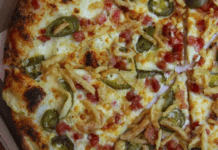Consumer demand for video content is on the rise and many savvy restaurant operators are adapting their marketing strategies to include video.
In fact, studies by U.S.-based HubSpot — a developer and marketer of software products for inbound marketing and sales — show 54 per cent of consumers want more video content from brands and businesses they support.
Julie Dalbec, executive producer at Montreal-based Toast Studio, says video is on the rise for a reason. “Video is a great format to convey the ambiance, approach and general experience restaurant-goers can expect. It allows management to tell its story, through interviews with the chef, testimonials with clients, et cetera,” says Dalbec.
This ever-growing demand for video content has created a surge in video strategies throughout the marketing world. According to a 2019 study by U.K.-based WyzOwl, 87 per cent of marketing professionals have incorporated video into their strategies, through vlogs, explainer videos, a virtual tour of their location, meet-the-chef videos and more
Dalbec says, no matter the style of video being shot, restaurateurs should stay true to their own brand. “In terms of style, you have to be authentic. Don’t sugarcoat it too much. People will know and be disappointed if what they saw on social media or on your website is not true to life.”
Creating a solid video strategy can be seen as an expensive venture, but there are a number of ways restaurateurs can cut costs without compromising quality. Smartphone super apps, such as Filmic Pro and MAVIS, allow for studio-quality editing in the palm of your hand.
That said, Dalbec urges users not to become too reliant on smartphone tech for professional videos, as there are other ways to cut down production costs.
“Tools like these can be interesting, but restaurateurs need to make sure they keep the quality at a fairly high level. These tools can help speed up the process, but a badly produced video will have a costly negative effect,” she warns. “Focusing on evergreen video productions [that will have a long shelf life] is a good way to ensure the budgets invested in video production can be amortized over a long period of time.”
Apps such as MAVIS, can give the user’s smartphone all the tools it needs to shoot high-quality film, including focus peaking, waveform monitor, vectorscope, false colour and zebras. MAVIS also gives the user the option to shoot with a custom frame rate.
While these apps can help restaurants working with smaller budgets, Dalbec says good storytelling in video transcends the technology.
“In the end, it’s often not a question of technology, but a question of being able to tell a good story,” says Dalbec.

















